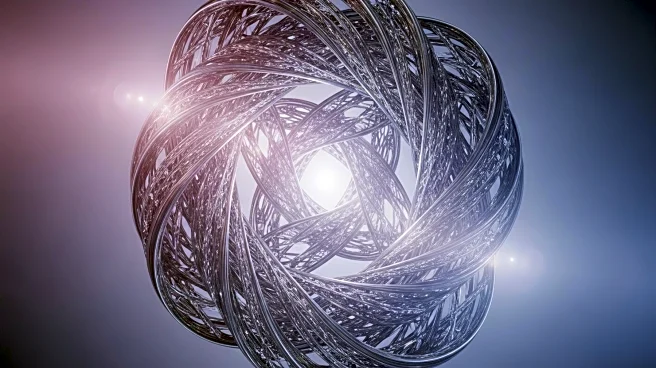What's Happening?
Researchers in Vienna have discovered two new types of time crystals that form in time rather than space. These 'continuous time crystals' exhibit self-sustaining oscillations without external influence, challenging previous theories that required periodic external forces. The study involved a lattice of particles in a Rydberg atom array, where quantum correlations led to the emergence of these time-crystalline phases. The discovery suggests that quantum mechanics can stabilize time rhythms, offering new insights into the nature of time and quantum systems.
Why It's Important?
The discovery of time crystals expands the understanding of nonequilibrium matter and quantum mechanics. These phases could have significant implications for quantum computing, providing stable oscillations for memory systems and more precise atomic clocks. The ability to harness quantum correlations for self-sustaining rhythms could lead to advancements in quantum technology, enhancing the reliability and efficiency of quantum devices. This research also opens new avenues for exploring entanglement and dissipation, key components in developing future quantum applications.
What's Next?
Researchers are eager to test these findings in laboratory settings, as the parameters used in the models are achievable with current technology. Experiments with Rydberg atom arrays could confirm the existence of these time-crystalline phases, providing empirical evidence for theoretical predictions. The study may inspire further research into the potential applications of time crystals in quantum technology, including their use in developing new quantum devices and systems.










